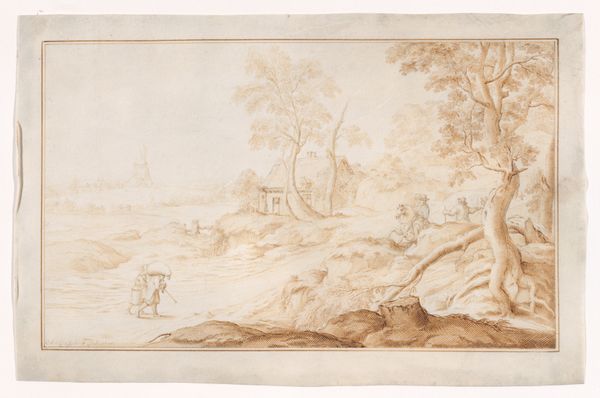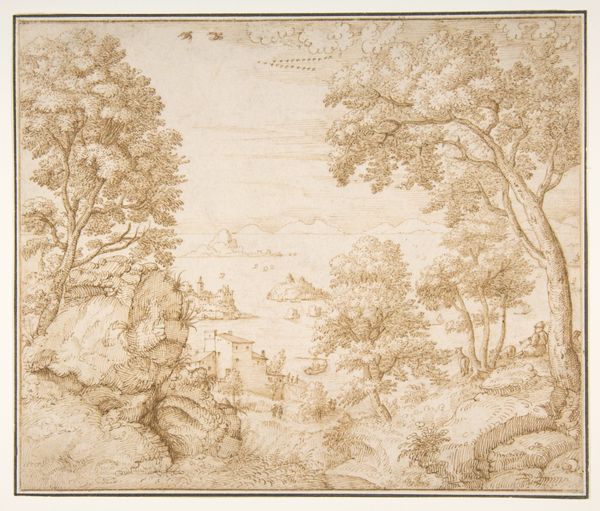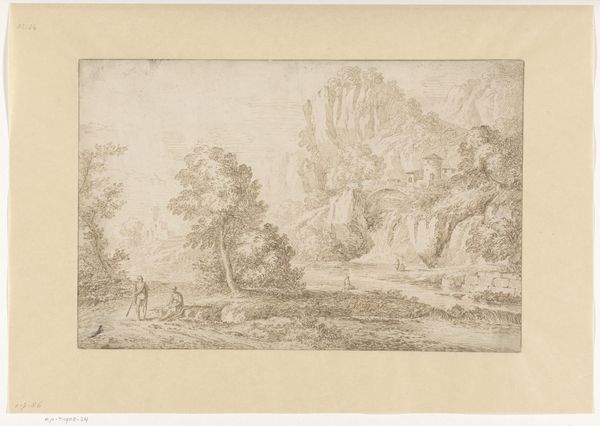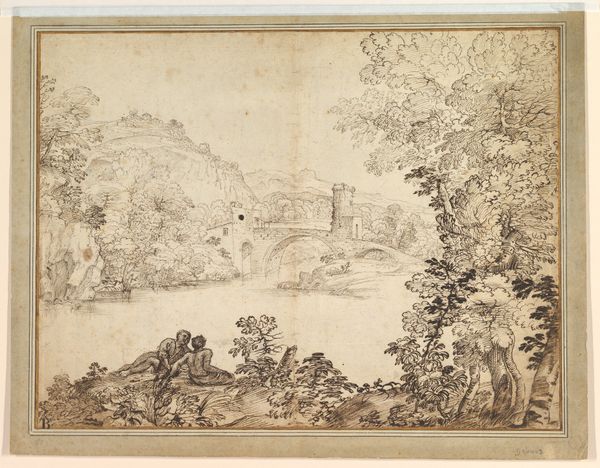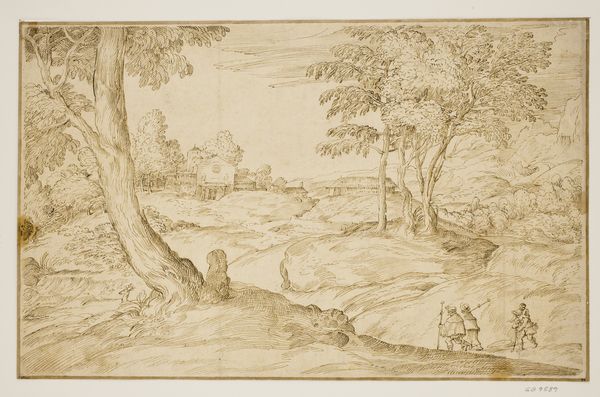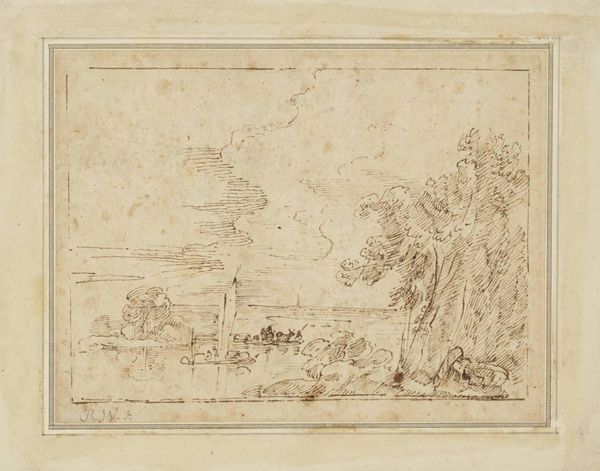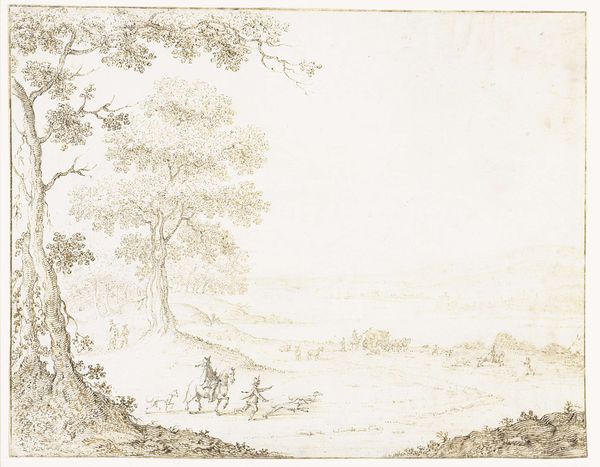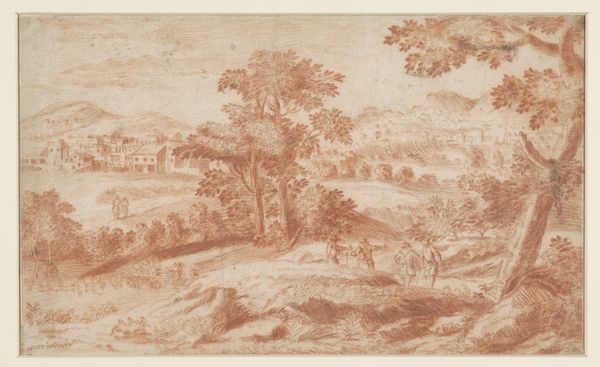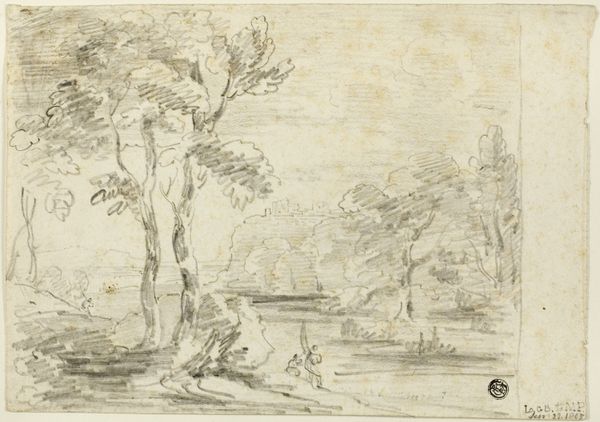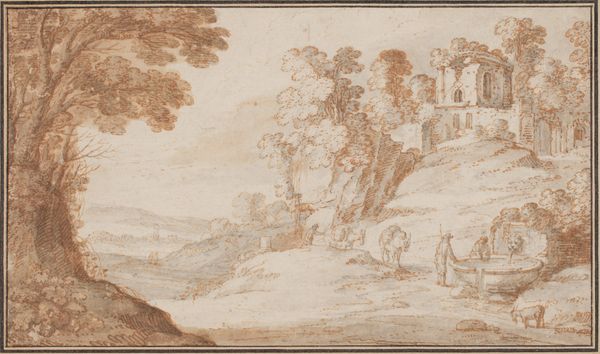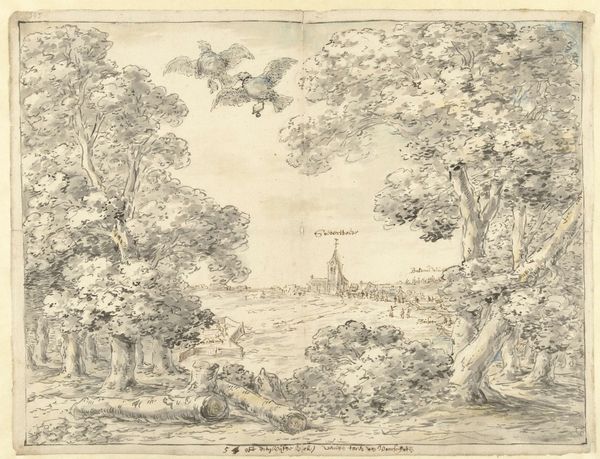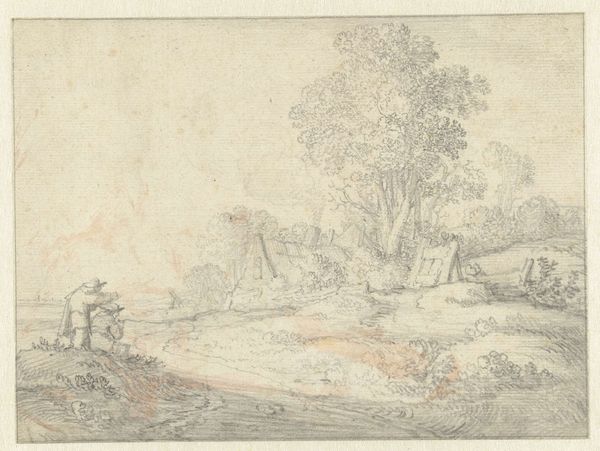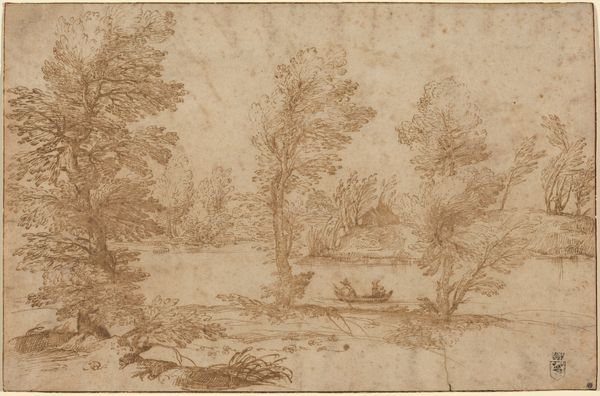
A River Landscape with the Baptism of the Eunuch 1600 - 1630
0:00
0:00
drawing, print, etching
#
drawing
#
baroque
#
dutch-golden-age
# print
#
etching
#
landscape
#
etching
Dimensions: Sheet: 10 13/16 × 16 3/8 in. (27.5 × 41.6 cm) Mount: 14 5/16 × 19 15/16 in. (36.4 × 50.6 cm)
Copyright: Public Domain
Curator: The drawing before us, titled "A River Landscape with the Baptism of the Eunuch," was created between 1600 and 1630 by Hendrick Hondius I. It’s a beautiful example of Dutch Golden Age landscape art, executed in etching. Editor: My first impression is the overwhelming feeling of distance. Everything seems far away, softened, rendered in delicate brown lines. It gives the scene a dreamlike quality, despite all the activity. Curator: Indeed. It masterfully combines a panoramic landscape with a biblical scene. Hondius wasn't just representing nature; he was embedding religious narratives within it, likely reflecting the cultural and spiritual values of the time. Note the detail in the foreground versus how minimal the backdrop city is. Editor: Absolutely, and let's consider that "etching" means acid did a lot of the work here. It's fascinating how Hondius utilized this process, controlling the acid's bite to create such variations in line weight. The material allows for incredible detail, but the labor…that's a controlled burn of sorts. You could say his hand guides a whole alchemical and social making. Curator: Precisely, the printing process allowed for wider distribution of imagery and narratives. This one is specifically housed here in The Met's permanent collection, meaning access, as usual, skews privileged! Editor: Distribution mattered then and matters now in access and value, especially considering the sheer scale and intricacy despite the relatively "simple" materials of ink, paper, and acid. Curator: It really speaks to the complex relationship between art, religion, and society during the Dutch Golden Age. The print served a specific purpose. The composition does too, doesn't it? Editor: The river bisecting the landscape—separating civilization and faith—suggests the transformative power of conversion, visually dividing the landscape, with that city ever lingering out in the distance! It really gives us a view into how Hondius saw material transformation as an action. Curator: So, as we leave this image, it seems that looking into Hendrick Hondius' vision here makes it all too clear—prints provided far-reaching social value. Editor: I think so, because we’ve seen a careful, skilled handling of process. Hondius turned humble materials into a statement piece about the power of religious events set in a time when printing as labor allowed all people a perspective.
Comments
No comments
Be the first to comment and join the conversation on the ultimate creative platform.
